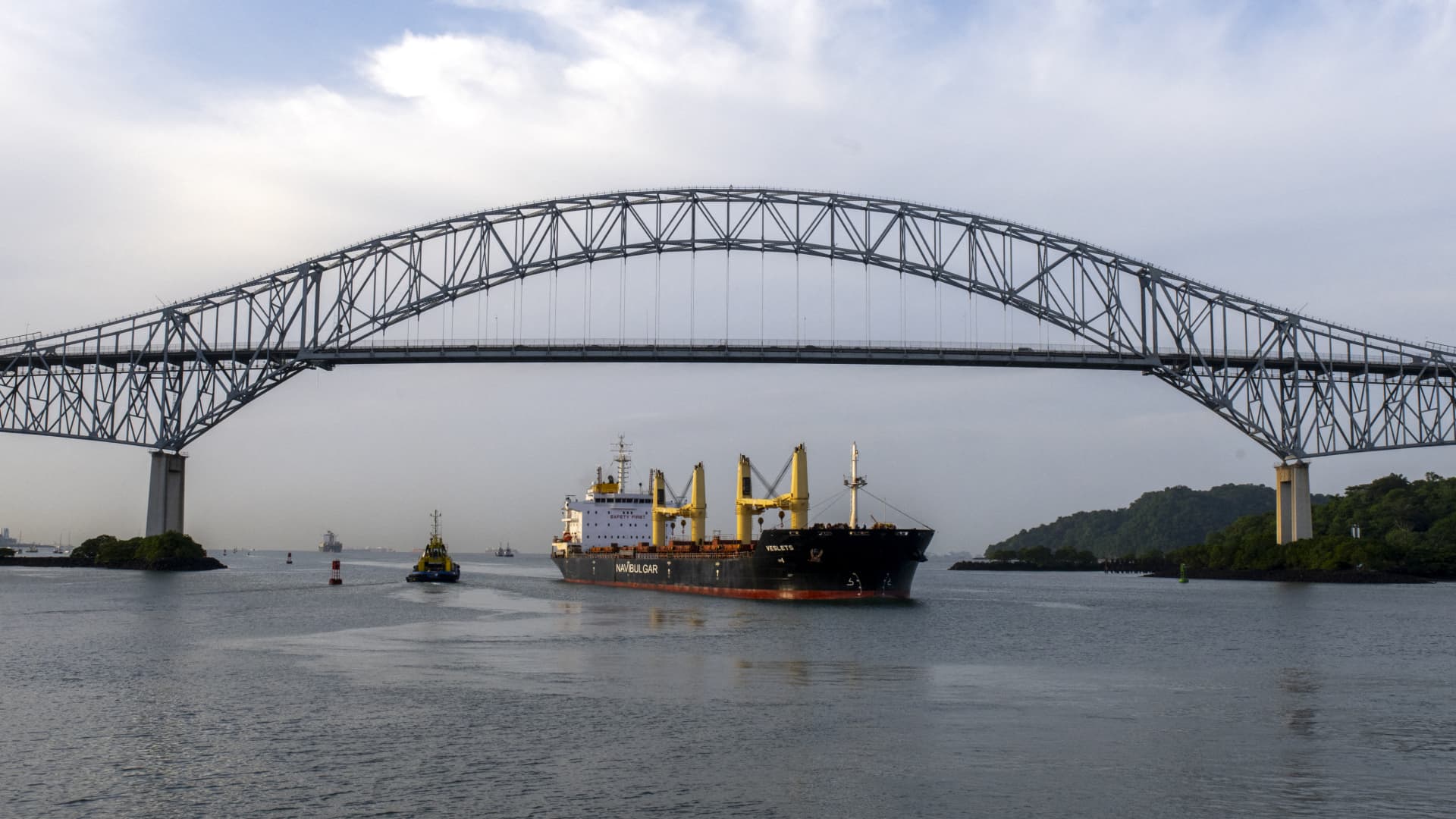A ship gracefully maneuvers through the Panama Canal near the Americas’ Bridge in Panama City on the picturesque date of June 12, 2023. As we bask in this beautiful scenery, it’s important to acknowledge that climate change is wreaking havoc on the world’s major shipping routes. And unfortunately, the impending El Niño phenomenon could make things even worse.
El Niño, meaning “the little boy” in Spanish, refers to the abnormal warming of the Pacific Ocean’s surface waters in the tropical central and eastern regions. This natural climate pattern occurs every two to seven years on average. While El Niño’s effects peak in December, its full impact takes time to spread worldwide. This time lag is why experts predict that 2024 could be the year humanity surpasses the crucial climate threshold of 1.5 degrees Celsius. In 2022, global average temperatures were already 1.1 degrees Celsius warmer compared to the late 19th century.
The drought-stricken country of Panama is also grappling with the consequences of El Niño. Low water levels have forced the country to reduce the number of vessels passing through the vital Panama Canal. This restriction has led to a backlog of ships waiting to navigate the route, which is popular among companies due to its time-saving benefits for travel between the Atlantic and Pacific Oceans. The Panama Canal Authority, responsible for managing the waterway, recently declared these measures as necessary due to “unprecedented challenges.” The severity of this year’s drought has surpassed all historical precedents.
This congestion at the Panama Canal follows closely on the heels of the UN weather agency’s announcement of the arrival of El Niño, a major climate phenomenon that is expected to trigger an increase in global temperatures and extreme weather conditions. And what we are witnessing right now may just be the beginning of a much larger problem.
Peter Sands, the chief analyst at the Xeneta platform, which benchmarks air and ocean freight rates, emphasizes that maritime chokepoints exist all over the world. However, it often takes catastrophic events like the 2021 Suez Canal obstruction to expose the fragility of the “just-in-time” delivery model. Sands compares global shipping to the world’s largest invisible sector. We rely on its services and goods, but rarely do we contemplate how they reach our shelves unless something goes awry.
The grounding of the Ever Given, one of the largest container ships globally, for nearly a week in March 2021 due to strong winds demonstrated the magnitude of disruption that can occur on busy trade routes. Analysts warn that extreme weather events caused by the climate crisis may increase the frequency of such incidents, leading to far-reaching consequences for supply chains, food security, and regional economies.
Returning to the long delays at the Panama Canal, Sands believes that the onset of El Niño could exacerbate the already challenging situation. The water levels show no signs of returning to normal, which is a cause for concern. Sands warns that we may be on the cusp of a potential disaster, with a potentially more severe drought in the first half of 2024.
While Danish shipping giant Maersk claims to have been mostly unaffected by the Panama Canal delays, it acknowledges the increasing prevalence and severity of climate risks along major shipping routes. Maersk’s head of the Americas liner operations center, Lars Ostergaard Nielsen, explains that the drought has compelled the company to load approximately 2,000 fewer containers than usual on each vessel. Current restrictions require container ships to comply with a maximum draft of 44 feet, instead of the usual 50 feet, due to the low water levels. Consequently, ships must either carry less weight or transport fewer goods, making a significant difference.
The Panama Canal is not the only waterway struggling to cope with extreme weather effects. The Rhine river, a vital trade route in Germany that runs through European cities to the port of Rotterdam, is also experiencing low water levels. In late July, water levels at Kaub, a measuring station west of Frankfurt and a crucial chokepoint for water-borne freight, reached their lowest level for the year. These falling water levels have become a recurring issue in recent years, making capacity transit more challenging and increasing shipping costs.
In a report published last year, global insurance broker Marsh emphasized the need to understand the vulnerability of maritime chokepoints due to the rising frequency of climate-related weather events. Marsh identified coastal inundation and increased risks of extreme heat as physical threats to the Suez Canal, which would be exacerbated by the climate emergency. The broker warned that if accidents or political events disrupted any of the five major global waterways, namely the Suez and Panama Canals, the Malacca Strait, the Strait of Hormuz, and the Bab-el-Mandeb, the consequences would reverberate beyond just supply chains, affecting economies and food security worldwide.
Denial of responsibility! VigourTimes is an automatic aggregator of Global media. In each content, the hyperlink to the primary source is specified. All trademarks belong to their rightful owners, and all materials to their authors. For any complaint, please reach us at – [email protected]. We will take necessary action within 24 hours.


